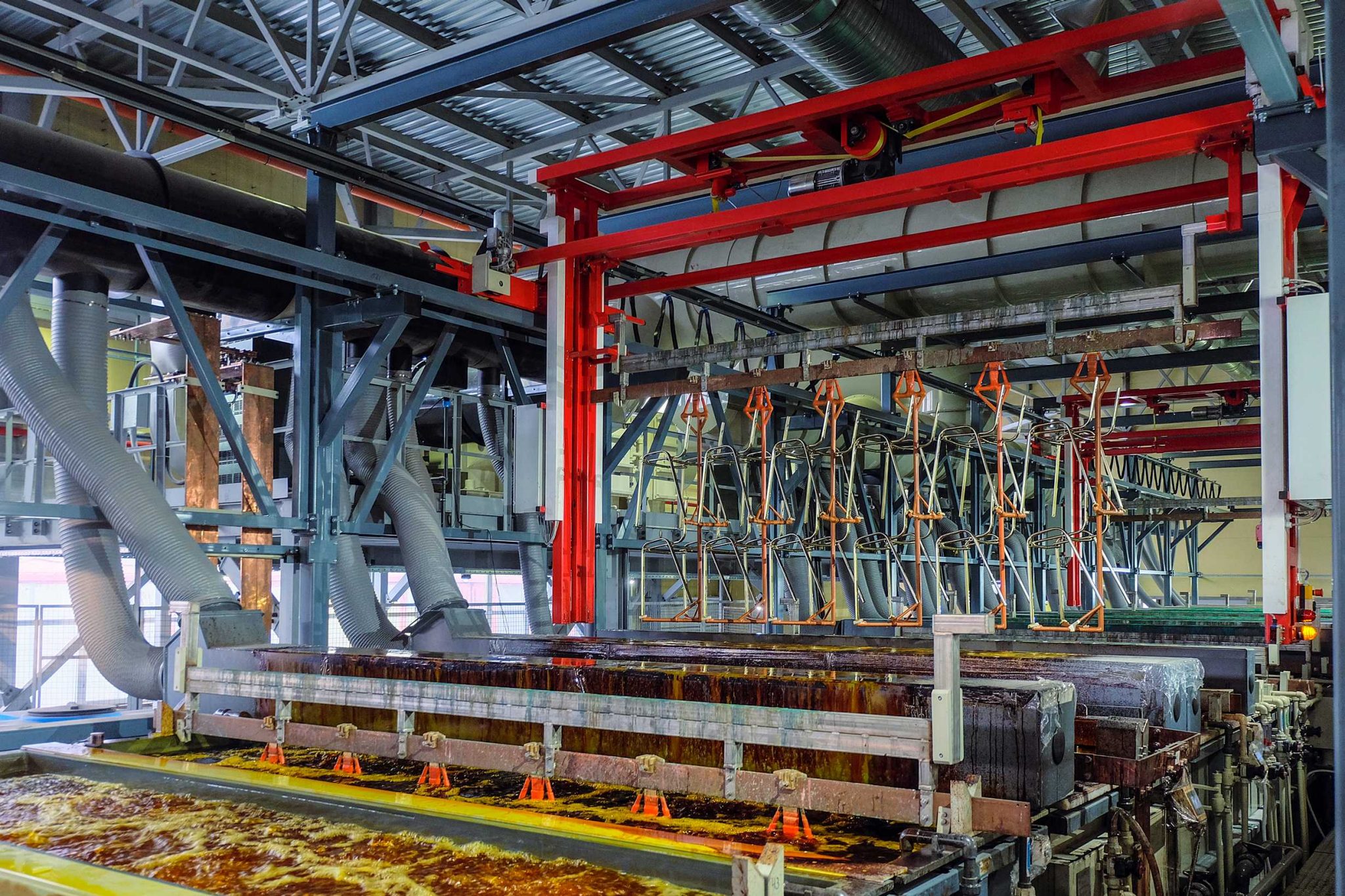Metal plating
Substances of concern
Plating processes can produce several undesirable by-products including air emissions, wastewater, and hazardous solid wastes. Waste reduction should be the goal in this industry as the contaminants of concern are generally toxic and highly resistant to biological treatment.
| Substances of concern | Sources |
|---|---|
| Metals | Plating baths and rinse water containing heavy and precious metal |
| Solids | Metal shavings/particles, paint, dirt, grime |
| pH | Caustic and acidic chemicals from cleaning and treatment processes |
Water reduction and pre-treatment options
Prior to surface refinishing it is important to take steps to minimize surface contamination of the object. This will reduce the need for cleaning and chemical usage during surface preparation.
Rinse water
It is estimated that up to 90 % of wastewater discharged from plating operations comes from the rinsing stage. Rinse tank contamination can be reduced by changing plating bath viscosity, chemical concentration, surface tension, speed of removal and temperature. Agitating rinse tanks can improve the efficiency of the rinsing process and reduce the required contact time. Recovery tanks can also be installed to reduce potential for contamination of the rinse water.
Neutralization
Neutralization of acidic and caustic wastewater can be done either as batch or a continuous process depending on the amount of wastewater generated.
Wastewater treatment options
Common metals (cadmium, chromium copper, lead, nickel and zinc) generated from electroplating and metal finishing can be removed from water by hydroxide precipitation. Complex metals treatment options may include high pH precipitation, chemical reduction or sulfide precipitation. All spent process solutions should be collected and disposed of at an approved facility.
Restricted substances
The table below outlines some of the substances that may apply to metal plating operations. For a complete list of substances please refer to Schedule “B” in Wastewater Bylaw 14M2012.
| Substance | Concentration Limit (mg/L) |
|---|---|
| Aluminum | 50 |
| Cadmium | 0.7 |
| Chromium | 3 |
| Cyanide | 1.2 |
| Copper | 2 |
| Iron | 50 |
| Nickel | 2 |
| Tin | 5 |
| Zinc | 2 |
| Methylene Chloride | 0.09 |
What to do if you have an unintentional release
In the event of an unintentional release, it is important to act quickly to prevent the material from entering the wastewater or stormwater system. You should notify:
- 911
- The City of Calgary by contacting 311.
- The owner of the premise where the release occurred.
- Any other person that may be affected by the release.
For any spills that could harm the environment you will also need to report the spill to Alberta Environment & Protected Areas (1-800-222-6514).
Resources
The below PDFs were designed to be filled in with Adobe Acrobat Reader. Download the form to your desktop and use Adobe Acrobat Reader to open, complete and submit this form. If you are using Edge or Chrome browser some fields will not work as intended and your form may not submit.
City of Calgary Bylaws:
Permits
Forms
- E1995-Analytical Results Reporting Form
- E1996-Clear Water Waste Disposal Application
- E1998-Hauled Wastewater Disposal Manifest - FOG
- E1999-Hauled Wastewater Disposal Manifest - Septage
- E2005 Food truck log book
- E2225-Non-Compliant Wastewater Investigative Report Template
- E2226-Pool Drain Request Form
- E2227-Pre-Treatment Maintenance Record Sheet
- E2228 – Fats, oils and grease interceptor service record
- Nuisance Water Disposal Flowchart


